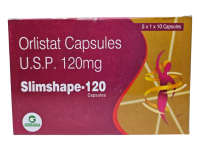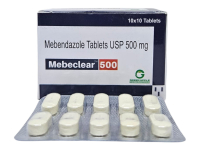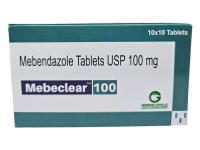


Hepatitis
Content
- The main forms and types of hepatitis
- Viral hepatitis
- Hepatitis A
- Hepatitis B
- Hepatitis C
- Hepatitis D
- Hepatitis E
- Hepatitis F
- Hepatitis G
- Toxic hepatitis
- Autoimmune hepatitis
Hepatitis is one of the most common liver diseases, most often due to organ damage by a virus. Nearly 2,000,000 people die from hepatitis worldwide every year.
The main forms and types of hepatitis
The disease can be acute or chronic.
The acute form of hepatitis is viral. It is characterized by a pronounced clinical picture: first, the patient's state of health sharply worsens, then there is a strong intoxication of the body, the whites of the eyes and skin turn yellow, the main functions of the liver are disrupted.
The chronic (inactive) form has a blurred clinical picture: most often the disease proceeds without symptoms. Chronic hepatitis can occur as an independent disease, and can become a complication of acute hepatitis. With this form, the patient suffers from aching pains in the right hypochondrium and nausea, and his liver increases significantly (this is noticeable even on palpation). If chronic hepatitis is left untreated, dangerous complications can arise, such as cirrhosis and liver cancer.
According to the cause of the occurrence, hepatitis can be:
- viral;
- toxic;
- autoimmune.
Conventionally, all these forms are combined into two groups - infectious and non-infectious hepatitis.
Viral hepatitis
Most often, it is viruses that cause liver inflammation. Their group is quite extensive and diverse: it is not known exactly how many types of hepatitis there are in nature. Today there are 7 types of viral hepatitis. They differ in the structure of viruses, modes of transmission and the degree of damage to hepatocytes.
Viral hepatitis is divided into two main groups - with enteral and parenteral mechanisms of infection. The first group includes hepatitis A and E: they can be infected through unwashed hands or by eating infected food and dirty water. The second group includes hepatitis B, C, D, G: they can be infected through blood.
- Hepatitis A
Better known as Botkin's disease, it is one of the mildest forms of the disease. Hepatitis A is a foodborne infection that affects liver cells but does not affect the digestive tract. The causative agent of the disease is an RNA virus that appears in the human body along with contaminated food and water or in the case of using infected household items.
The disease has three main forms:
- icteric;
- anicteric;
- subclinical.
Diagnosis of the disease is carried out by a blood test, in which antibodies of the IgM class are detected. A person who has once had hepatitis A gets immunity to this form of the disease.
- Hepatitis B
One of the most common diseases, it is viral in nature. Hepatitis B comes in two forms:
- acute, in 10% of patients turning into chronic;
- chronic, causing numerous complications.
The disease is transmitted in two main ways - artificial and natural. In the first variant, the virus enters the human body along with contaminated blood during blood transfusions, donor organ transplants, while visiting a dentist, beauty salons, using infected syringes and needles. The natural route of infection is primarily sexual. Another way of infection is vertical infection that occurs during childbirth from a sick mother to her baby.
Hepatitis B is difficult to treat. It should be complex: the choice of drugs directly depends on the stage and form of the disease. It is impossible to completely recover from hepatitis B, but vaccination can prevent infection.
- Hepatitis C
Known in medical circles as HCV infection, it is considered one of the most dangerous hepatitis. Today, infectious disease doctors know about the existence of 11 genotypes of the hepatitis C virus. All of them are united by one feature: the causative agent of the disease can be transmitted only through infected blood.
The clinical picture of hepatitis C has much in common with the clinical picture of hepatitis B: the disease can be either acute or chronic. According to statistics, the chronic form of hepatitis C in 20% of patients turns into cirrhosis or liver cancer. Those who already have hepatitis A and B are most likely to develop complications. Unfortunately, there is no vaccine against hepatitis C.
The duration of therapy and its outcome are directly dependent on the genotype, form and stage of the disease. In addition, the patient's age and lifestyle influences the outcome of treatment. The greatest effect in the fight against hepatitis C can be achieved with the use of a new generation of antiviral drugs. The most effective of them is considered "Interferon alpha": positive results in the treatment of this medication are achieved in 40-60% of patients.
- Hepatitis D
Arising when a person becomes infected with the HDV virus, it is more commonly known as delta hepatitis. Hepatitis D is characterized by acute liver damage. The disease is difficult to treat: infectious disease doctors consider hepatitis D the most insidious of all hepatitis.
The HDV virus has one significant difference from the viruses of other hepatitis: it does not have its own envelope and is not capable of independent development in the human body. A prerequisite for its reproduction is the presence of the hepatitis B virus.That is why only those infected with hepatitis B can get delta-hepatitis.
Hepatitis D can be of two forms: acute and chronic. In the acute form of the disease, patients complain of:
- pain in the right hypochondrium;
- the onset of fever;
- darkening of the color of urine;
- the appearance of nausea, vomiting, nosebleeds;
- ascites.
People with chronic delta hepatitis may not have symptoms. Today, there are no drugs that can completely defeat the HDV virus. However, thanks to modern antiviral treatment, taking hepatoprotectors and immunostimulants, it is possible to achieve significant results in the fight against this insidious disease, to suspend the development of pathological processes in the liver and to minimize the risk of dangerous complications.
- Hepatitis E
Transmitted with contaminated water and food, it is most often diagnosed in residents of hot countries with poor-quality water supply. However, hepatitis E can be contracted not only through the fecal-oral route, but also through the blood.
The symptoms of the disease have much in common with the symptoms of Botkin's disease. Hepatitis E is characterized by a disorder of the digestive system, an increase in body temperature, discoloration of the skin and sclera of the eyes (they acquire a yellow tint).
Most often, the prognosis for those infected with this type of hepatitis is quite favorable. However, if the infection happened in the third trimester of pregnancy, the disease will be difficult and may result in the death of the fetus and mother.
Hepatitis E has one major difference from other types of this insidious disease - its pathogen kills not only the liver, but also the kidneys.
- Hepatitis F
It is a poorly understood type of disease. Experts all over the world, conducting laboratory studies, study the etiology of the pathogen and the ways of its transmission. Since the clinical picture of the virus is not yet clear, it can be very problematic to make an accurate diagnosis.
Infection with hepatitis F occurs through the blood. Infectious disease doctors distinguish five stages of the course of the disease:
- incubation;
- preicteric;
- icteric;
- convalescence;
- residual effects.
- Hepatitis G
A disease recently discovered in someone infected with hepatitis C. Many experts consider it to be one of the varieties of hepatitis of this type.
Hepatitis G is still poorly understood, but it is already known that the virus is transmitted in two ways: through the blood during sexual intercourse or from mother to child during childbirth.
Toxic hepatitis
It is the result of a negative effect on the human liver of chemicals, industrial poisons, plant poisons, alcoholic beverages and some medicines.
According to the source of infection, toxic inflammation of the liver can be:
- Alcoholic - the consequences of the toxic effect on the liver of alcoholic beverages. Toxic hepatitis of this type leads to metabolic disturbances in hepatocytes and their replacement by adipose tissue.
- Medication - occur when using hepatotoxic drugs ("Ibuprofen", "Ftivazid", "Biseptol", "Azathioprine", "Methyldopa", etc.).
- Professional - the result of exposure to the human body of industrial poisons such as phenols, aldehydes, pesticides, arsenic, etc.
Infection with toxic hepatitis can occur in other ways: through the respiratory system, gastrointestinal tract, tactile way.
Autoimmune hepatitis
Refers to one of the most rare diseases: 50-100 cases per 1,000,000 people. It is most often diagnosed in young women.
The causes of autoimmune hepatitis are not fully understood. However, it is absolutely certain that it begins to develop due to failures in the immune system. Hepatitis of this type extensively affects the liver and some other organs (for example, the pancreas).
The disease is characterized by certain specific and non-specific symptoms:
- the development of jaundice;
- darkening of the color of urine;
- the appearance of weakness;
- pain in the right hypochondrium;
- itchy skin;
- ascites;
- fever;
- polyarthritis.
If treatment is not promptly started, autoimmune hepatitis will lead to cirrhosis of the liver and liver failure. Therefore, donor gland transplantation will be required.
It is impossible to detect hepatitis only by external signs. To make an accurate diagnosis, it is necessary to conduct a comprehensive study: biochemical blood test, ultrasound of the abdominal organs, computed tomography, liver biopsy.
Which of the hepatitis is the most terrible for a person, no specialist will say. Any of them can lead to the development of irreversible processes in the liver and cause death. Today, infectious disease specialists know several types of hepatitis, but every year scientists discover new subspecies, perhaps even more dangerous to human health.
In order not to get infected with one of the most insidious diseases in the world, observe the rules of personal hygiene, avoid casual sexual intercourse and vaccinate in a timely manner.
You can familiarize yourself with the recommendations of specialists on measures to prevent hepatitis, the principles and methods of treating the disease, as well as videos on this topic on our website.


























































